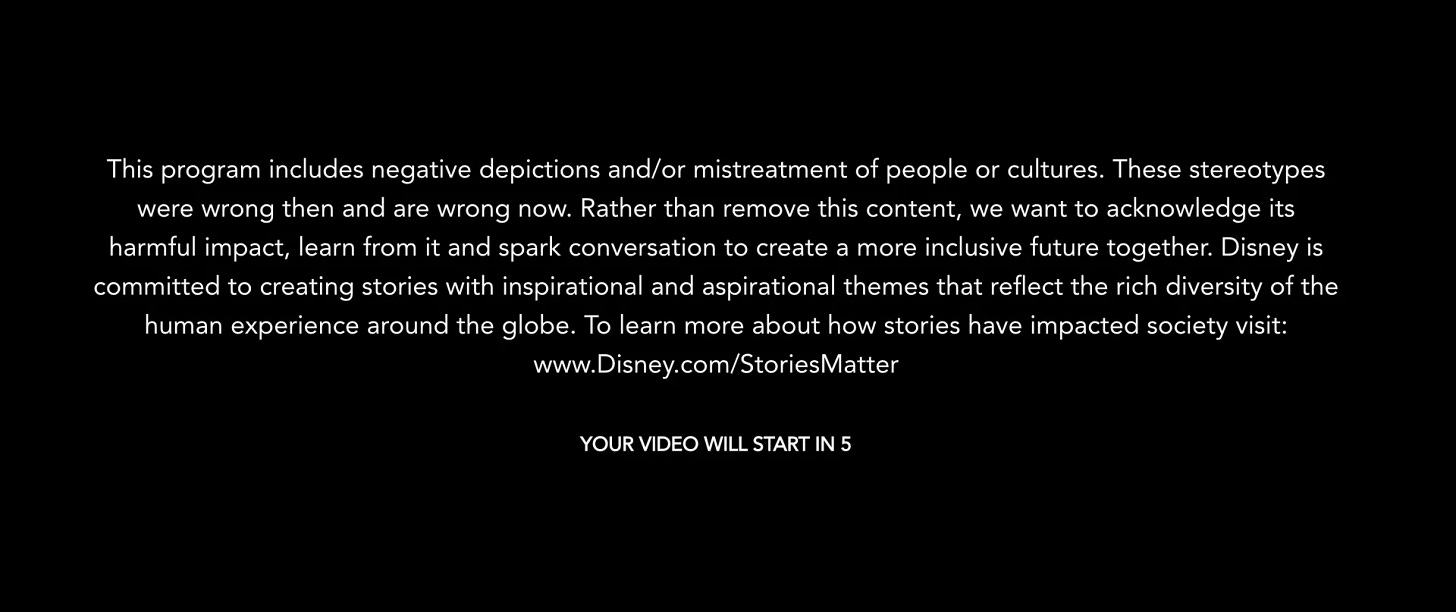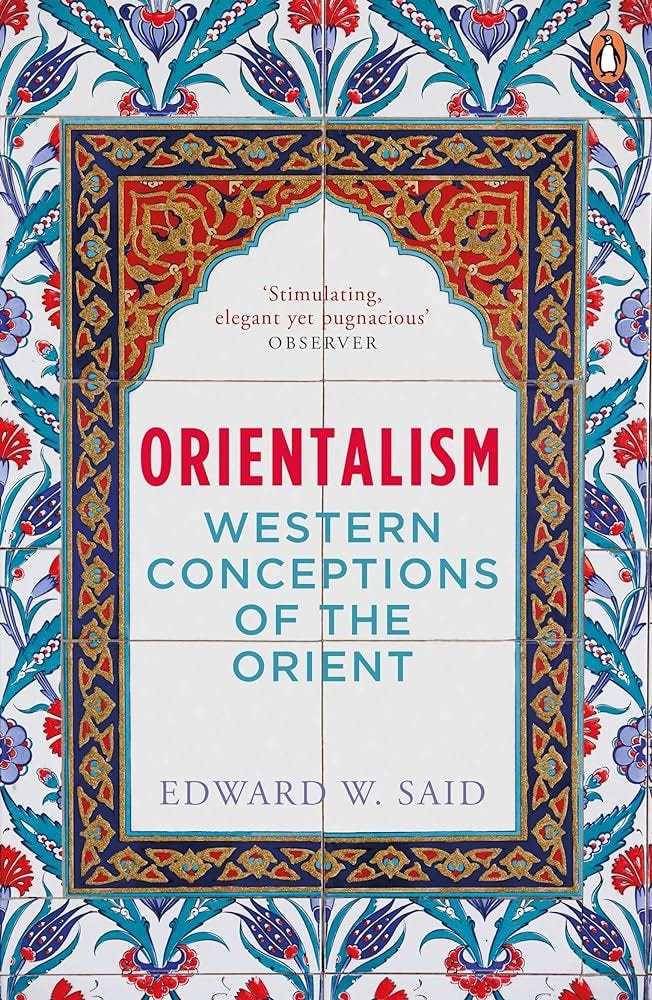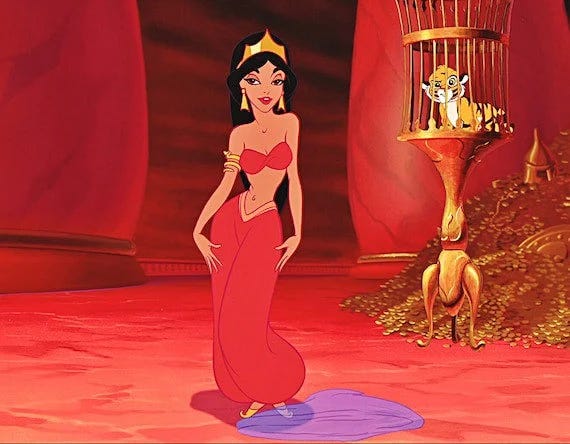Anti-SWANA Orientalism in Fiction Books: Fantasy is an Extension of Reality in a Politicised World
What do your books know of MY “Middle East”?
BEFORE PROCEEDING
Please help aid my friend Deema and her family’s escape from Gaza to safety in Miṣr by supporting their GoFundMe. Whether you do so through donating to it yourself, or simply sharing the link to it.
They have a big family and are so close to their goal.
!الحرية لفلسطين
Do you remember “Arabian Nights”?
Do you know of the disclaimer Disney now issues prior to the screening of Aladdin?
There’s a word for what you’re seeing.
Not the virtue signalling performed by a notoriously racist, hypercapitalist mega-corporation decades after the damage has been dealt, nor this corporation’s involvement with none other than Metro-Goldwyn-Mayer—a media company responsible for producing Israeli propaganda videos during the 1948 [and ongoing] Palestinian Nakba…
Oh, you didn’t know that one, did you?
No, I mean the aforementioned “stereotypes” and “negative depictions and/or mistreatment of people or cultures”.
It’s called Orientalism.
Anti-SWANA Orientalism, in this context.
And if there’s one thing about me, it’s that I love nothing more than looking for a fight. And today, the fight I’m looking to pick is with writers and readers apropos of anti-SWANA Orientalism in written, and otherwise, fiction. Because another thing I love above all else is interrogating Orientalism in entertainment media. I do sensitivity readings about it!
So, hand me my revolutionary war musket, boys. It’s time to chase some Frenchies out of ad-Dzāyir (“Algiers”).
Content Warnings: Orientalism, racism, colonialism, indigenous and minority erasure, genocide, Islamophobia, Antisemitism, misogyny, religion, imagery of war, white supremacy, Nazism, terrorism, [sex] slavery, caricatures, references to slurs
Quick Introduction Before I Yap Away
This is the long-anticipated—by me—sequel to what I consider my magnum opus essay on the issue of Orientalism, instead in the context of Russia.
Russia in Fantasy Books: Egyptomania for Readers
Imperialism, Orientalism, white supremacy, indigenous erasure, racism, cultural appropriation.
Go read it; it’s actually very good for something I wrote.
This second instalment will probably be lengthier than what I’m accustomed to, but the topic of anti-SWANA Orientalism in fiction deserves the time of day.
Full disclosure: this article will not be a deep dive into Orientalism as a concept, its history, its diverse global symptomatology, etc. For that, and I say this damn near weekly at this point, just go read Edward Saʿīd’s Orientalism.
It’s not exactly prerequisite reading material, but it should be. I’ll be quoting it plenty going forward.
It begs to be mentioned that I will be tackling specifically Anglophonic, that being English-language, primarily written, modern fiction here.
Further, while I will touch on inter-communal clashes and discourse when it comes to different SWANA peoples (as being a mixed, indigenous minority permits me), this will be kept to a minimum, as it won’t always be relevant to the core of my thesis.
Finally, I will be dragging books and authors (primarily just one), and also be mean&snappy for the humour and the culture. If you don’t want to hear [very justified and founded] criticism of your favourite page tattooist, get out now. I’m a b*tch on the internet; I will die a mortal death just like you.
What is “SWANA”?
First, let’s decode that “SWANA” acronym you’ve been hearing about.
SWANA Alliance1 defines “SWANA” as:
“…a decolonial word for the South West Asian/North African region in place of Middle Eastern, Near Eastern, Arab World or Islamic World that have colonial, Eurocentric, and Orientalist origins and are created to conflate, contain and dehumanize our people. We use SWANA to speak to the diversity of our communities and to forward the most vulnerable in our liberation.”
“SWANASA”, then, is South West Asia/North Africa/South Asia. Sometimes, but rarely, you’ll see “CASWANASA” which also includes Central Asia.
An important detail of note is that “SWANA” is not interchangeable with “the Middle East”. SWANA is a variation of MENA—Middle East/North Africa. If SWANA=MENA, then SWANA≠Middle East because you’re only telling half of the acronym’s story. This conflation escalates to erasure practiced even among West Asian people, including those in activism circles, who frequently forget, or don’t account for, the unique struggle of indigenous North African peoples like Imazighen.
Moreover, whenever I use the term “white” in reference to people, and I will, I mean chiefly people from the Anglo colonies like the US, Australia, Canada, as well as England, possibly France and Germany too. “Whiteness” is inherently arbitrary and at the mercy of a given society because race is not a biologically real concept [though it is socially]. During the White Australia Policy, for example, Southern Europeans like Greeks and Italians were considered “white” and therefore granted entry into Australia, whilst Eastern Europeans such as Belarusians or Baltic people were not, and therefore were barred. So, if I mean European, I will cite the specific European I mean. Read “white” as most likely “Anglo” and “of the Anglo colonies”.
Something else of import is that policing of SWANAn people’s language in reference to themselves will not be tolerated. There are West Asians who are fine with the term “Middle Eastern”, especially among older people [but not exclusively]. As a by-stander, you are expected to use the most inclusive and culturally aware language; we as SWANAns partake in a different dynamic in this context. Being an outsider, you do not shame us for using terminology like “Middle East” if we so choose. Your job as a comrade is speaking with us, not over us.
[Re]defining and Exemplifying Orientalism
If you know me at all, you by proxy know what’s about to happen.
Palestinian-American scholar Edward Wadī Saʿīd defines Orientalism in his namesake novel2 as:
“…a distribution of geopolitical awareness into aesthetic, scholarly, economic, sociological, historical, and philological texts; it is an elaboration not only of a basic geographical distinction (the world is made up of two unequal halves, Orient and Occident) but also of a whole series of ‘interests’ which, by such means as scholarly discovery, philological reconstruction, psychological analysis, landscape and sociological description, it not only creates but also maintains; it is, rather than expresses, a certain will or intention to understand, in some cases to control, manipulate, even to incorporate, what is a manifestly different (or alternative and novel) world; it is, above all, a discourse that is by no means in direct, corresponding relationship with political power in the raw, but rather is produced and exists in an uneven exchange with various kinds of power, shaped to a degree by the exchange with Power Political (as with a colonial or imperial establishment), Power Intellectual (as with reigning sciences like comparative linguistics or anatomy, or any of the modern policy sciences), Power Cultural (as with orthodoxies and canons of taste, texts, values), Power Moral (as with ideas about what ‘We’ do and what ‘They’ cannot do or understand as ‘We’ do).”
Huh?
Orientalism is a complex and fascinating study and power struggle, and while yes, a more simplistic definition may and indeed will be imparted, it felt—or is—necessary to delineate this concept in as scrupulous of a manner as permitted.
But what native element remains when the aforestated is stripped down?
At its most basic, Orientalism is the, generally Western, view of the East and Global South in patronising, essentialist, reductive stereotypes rooted in colonialist attitudes. The East and Global South can be interpreted as “the Third World”, as well as “the Second World”: what was known in the days of yore as “the Orient”. The aforementioned “West” embodies “the Global North” or “the First World”. It is important to acknowledge that Orientalism very often occurs within polarities, such an anti-SWANA and anti-South Asian Orientalism in East Asia and vice versa, the fetishisation of Arab or Turkish cultures by Russians, or even the supremacist attitudes of Khalīji Arabs towards Levantine Arabs and Imazighen, or Turks towards Arab immigrants, Turks towards indigenous populations like Kurds and Assyrians, Irânians towards non-Irânian Persians.
It is salient to make note here of Arab, specifically Khalīji, colonisation of North Africa: what they dubbed Bilād al-Maghrib, or the “Lands of the West”, and what indigenous North Africans propose to be called “Tamazgha”. Following Arab conquest of Miṣr (Egypt) in 642, the raiding of Amazigh territory in the west began, with massacres and displacement therein.34 The subjugation of North African peoples is glaringly evident on a larger sociopolitical stage, but on a quote-unquote lesser scale too in the frequent forgettance of the “NA” portion of SWANA—a colonial legacy within the polarity. Orientalism both stems from and results in the “disregarding, essentializing, denuding [of] the humanity of another culture, people, or geographical region” (Saʿīd, 1978), which not just Anglo-Franco-Germano-USian Westerners are guilty of, but parties who may otherwise be harmed by those very Westerners.
That, however, is not today’s topic of discussion, it is merely a disclaimer because A) it’s important, and B) I’ve been on the internet for a very, very long time.
We focus today on Anglocentric supremacy, its relationship with anti-SWANA Orientalism, and, eventually, how that translates into modern Anglophonic literature.
So, where does that lead us next? And what do English-language romantasy—and otherwise—fiction books even have to do with it?
“Middle East” as Commodity as Colonial Legacy
As an introduction to this subsection, I would like to read the opening paragraph to Watermelons Smash Against Riot Shields, written by Ghazal here on Substack:
“The heavy aestheticization of the Middle East has made it impossible for me to be spotted as an Arab. There must be something wrong with me or the way I look. Indigenous tattoos are so in right now, especially if you’re white — just draw a line on your fucking chin. Egyptian jewelry looks so chic. Let’s all dance to fucking shik shak shok. Dune was so epic I wish Arabs were real. Orientalism has never been in such a popular state. Liberalism has made it so incredibly easy to co-opt aesthetics from the east by depoliticizing clothing, jewelry, tattoos, music, art… I have never seen anything like it before — to feel like my culture is forgotten as much as it is over portrayed.”
Highly recommend reading the essay in full.
And indeed. Nothing more popular and aesthetic and pretty than wearing nazar jewellery or the nazar pattern as if it’s not a culturally significant item with varied degrees of spiritual gravity across its native region. Instead, it’s now blonde white girls whose great-grandparents migrated from Norway wearing at their neck the most massive glass Evil Eye bead they bought on Amazon—looking like they straight up robbed my dad of his garden decor except my dad’s garden decor isn’t made through child labour in a factory. It’s not even just the white girls doing it, it’s anyone in the Anglo-colony West without a single degree of connection to SWANASA, the Balkans, or the Mediterranean [and we can talk about how much of a ‘pass’ your DNA gives you, just not in this essay].
Now let me continue my crusade by quoting Edward Saʿīd again—(I promise this essay is about fictional entertainment media)—because Ghazal’s point apropos of the depoliticisation of clothing, jewellery, etc. hits.
I raise you:
“…the general liberal consensus that ‘true’ knowledge is fundamentally nonpolitical (and conversely, … overtly political knowledge is not ‘true’ knowledge) obscures the highly, if obscurely, organized political circumstances obtaining when knowledge is produced. No one is helped in understanding this today when the adjective ‘political’ is used as a label to discredit any work for daring to violate the protocol of pretended suprapolitical objectivity.”
Just like the Evil Eye is spiritually significant, so too are our tattoos and embroidery and dresses and carpets and pottery and art. Not only is it all inherently political through its existence as time capsules for history, as communication of heritage, as ancestral pedagogy, but it is actively politicised under various structures of colonial hegemony and militarised violence (both Western and not) which criminalise, oppress, suppress, erase, and commit genocide against our cultures, especially cultures belonging to those of us most vulnerable like stateless people and minorities.
Orientalists of centuries past adopted an essentialist conception of the world outside of the Anglo-Franco-German imperial core—topically: those of the “Orient”—vivisecting the people, cultures, languages, histories of those nations and states for study by the Western European coloniser. Thusly, the subject of said “study” instead becomes an object, a reductive abstraction, a mannequin to be taken apart and a body laid out beneath harsh white lights for observation and voyeurism.
So let me repeat the very same Edward Saʿīd quote I read in my previous video of this Orientalism duet:
“Always there lurks the assumption that although the Western consumer belongs to a numerical minority, he is entitled either to own or to expend (or both) the majority of the world resources. Why? Because he, unlike the Oriental, is a true human being.”
At what cost?
French-Coptic political scientist Anouar Abdel-Malek invokes “the hegemonism of possessing minorities”5, or:
“…one ends with a typology—based on a real specificity, but detached from history, and, consequently, conceived as being intangible, essential—which makes of the studied ‘object’ another being with regard to whom the studying subject is transcendent; we will have a homo Sinicus, a homo Arabicus (and why not a homo Aegypticus, etc.), a homo Africanus, the man—the ‘normal man’, it is understood—being the European man of the historical period, that is, since Greek antiquity. One sees how much, from the eighteenth to the twentieth century, the hegemonism of possessing minorities … and … anthropocentrism … are accompanied by Europocentrism in the area of human and social sciences, and more particularly in those in direct relationship with non-European peoples.”
I would also like to append that, generally, when Europocentrism or Eurocentrism are spoken of in contexts like these, it is specifically in reference to the colonial superpowers therein like England, France, Spain, Germany, the Netherlands, Belgium—chiefly Western Europe, as well as North America. Countries, for example, of the Balkans or Eastern Europe [sans Russia] simply cannot be discussed in the same way, for they themselves are largely victims of colonialism to this day.
Saʿīd commentates upon the thinking of Abdel-Malek thusly:
“[A] white middle-class Westerner believes it [their] human prerogative not only to manage the nonwhite world but also to own it, just because, by definition, ‘it’ is not quite as human as ‘we’ are.”
African-American novelist Toni Morrison discussed the “white gaze”, that “our lives have no meaning, no depth without the white gaze.”6 Iranian-American feminist scholar Minoo Moallem further asserts that “intrinsic to the fixation of the gaze” is also violence, that being the Mythic Violence of the hegemony.7
It is through these thinkers that we can postulate a certain “Western gaze”, that being the gaze of the largely-Anglo-Franco-Germano-USian colonial entity which has caused unprecedented upheaval to SWANA (though is far from solely responsible for it). The Western gaze is the same one through which the Orientalists of yore viewed SWANA—essentialised, denuded, primitive, uncivilised, an object, an Other.
Saʿīd maintains that:
“Arabs, for example, are thought of as camel-riding, terroristic, hook-nosed, venal lechers whose undeserved wealth is an affront to real civilization. […] In newsreels or news-photos, the Arab is always shown in large numbers. No individuality, no personal characteristics or experiences. Most of the pictures represent mass rage and misery, or irrational (hence hopelessly eccentric) gestures. Lurking behind all of these images is the menace of jihād. Consequence: a fear that the Muslims (or Arabs) will take over the world.”
Indeed, we see this in most Western media coverage of SWANA (not only Arab or Muslim), including that which may potentially, somewhere down the line, have been well-meaning (and, again, a good portion of Orientalist rhetoric is often erroneously regarded by its propagator as ‘well-meaning’). It generally comes with provocative titles the likes of ‘Nation Building at Gunpoint’ in reference to Irāq. This doesn’t work to critique the post-Ba’athist political ecology of the nation in a way that is compassionate to the true victims—the civilians—but instead sensationalises struggle and further ingrains a militaristic, non-nuanced iconography of these regions in the minds of Westerners far removed from the plight of Easterners and Global Southerners—a plight their dollar very often contributes to. Geopolitical unrest leaves a lesion upon communities and the environment, costing people their health and lives, yet it is dubbed by Westerners as a ‘norm’ for the East and Global South—an Orientalist concept rooted in centuries of colonisation, commodification, homogenisation, and dehumanisation of non-Westerners. “To say simply that Orientalism was a rationalization of colonial rule is to ignore the extent to which colonial rule was justified in advance by Orientalism, rather than after the fact” (Saʿīd, 1978).
And let’s return to that one quote of Saʿīd’s (I promise this is about fiction):
“Arabs … are thought of as camel-riding, terroristic, hook-nosed, venal lechers…”
I’d like to call special attention to the wording “venal lechers”.
Translation?
“Corrupt perverts.”
SWANA: Sexualised
Since time immemorial, the colonial Western gaze has viewed “the Orient” as barbaric and sexually deviant. The pejorative for the Amazigh people of North Africa, a term which was used so often that it became what Imazighen for a long time were known as, similar to the g-word situation with Roma, comes from the Ancient Greek βάρβαρος (bárbaros) for “barbarian” (also “non-Greek-speaking”; βαρ-βαρ (bar-bar) is quite literally the Ancient Greek equivalent of “blah blah”).
This is where we get the Orientalist paintings of the French and British—that “classic Orientalism” of the olden days, nevermind that a huge number of their subjects were also enslaved women from the Balkans, Greece, and North Africa.
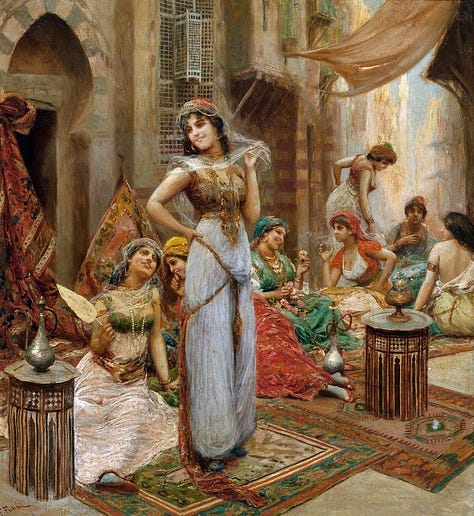


This is where we get the modern interpretations of bellydancing attire, something which has been appropriated and twisted from a cultural practice associated with fun and festivities, into a sex symbol; something you need to pretend to look away from for it feels “disrespectful” to watch. I’ve witnessed such behaviour from Westerners at gatherings.


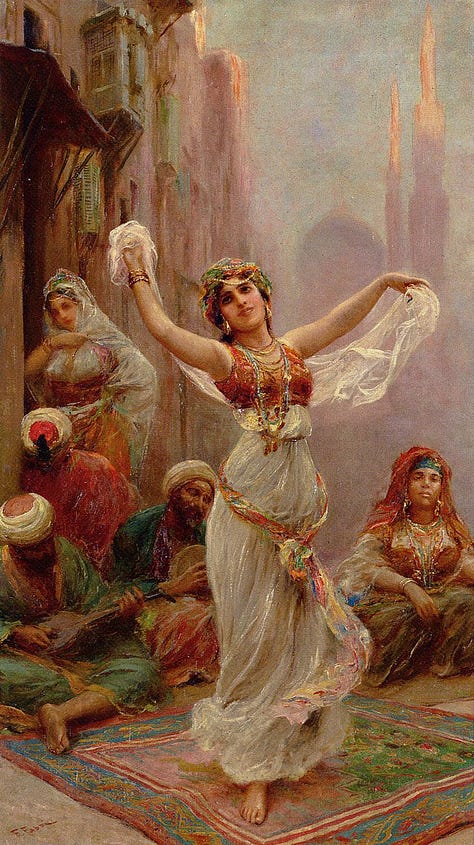
The West Asian woman was “indecent”, “depraved”, “libertine”, and yet, in chorus, oppressed and dehumanised by the West Asian, brown, often obviously Muslim, man—and the men were always depicted in Orientalist art as the brown ones whilst the women were painted light or even pale. That’s not to say there aren’t pale West Asians, there absolutely are given how diverse the region is, and “white”, again, is a political term defining the status of “whiteness” as opposed to the fact of having pale skin: you may still be classified as POC or non-white despite paleness. But it is in context that we need to explore this pattern of depiction because it is the context which reveals to us the subliminal message being communicated, either consciously or subconsciously on their part, by these Western European male observers. Still remember “Arabian Nights”? The depiction of Jasmine vs Jafar in Disney’s Aladdin is almost a 1-to-1, uncanny mirror of paintings from the “golden age” of artistic Orientalism.

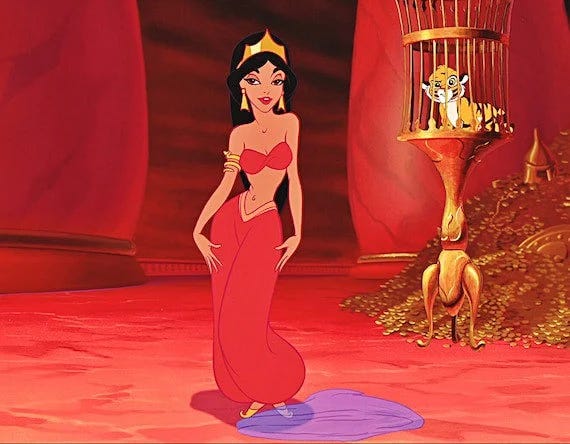
That very context too underpins the development of “Middle Eastern” representation, participation, and coding within modern Anglophonic literature.
I told you this is about fictional entertainment media; we are getting there!
And with that, I would like to preface by saying that I will be critiquing very popular fictional media, particularly the books of romantasy and Zionist imperatrix Sarah J. Maas—dubbed SJM, going forward. In the words of French sociologist and anthropologist Didier Fassin, “the unbearable lightness of being that paradoxically characterizes certain forms of alleged radicalism as well as certain retreats in an ivory tower” can be challenged through critique, which “[removes] the ideological veil imposed on people so as to allow them to realize the deception that renders their domination possible” and “[contests] the self-evident representations of the world they hold true while acknowledging the possibility of other representations.”8
And as I said in my previous instalment of this Orientalism duet: if you cannot critique a piece of media you like, you don’t actually like that piece of media.
Fetishisation is Violence
The sexualisation of Eastern cultures, particularly the feminine and femme-aligned, is prolific. From SWANA to South Asia to East Asia to not even Asia.
The utilisation of “ethnic” cultural aesthetics by Western authors of modern Anglophonic literature remains executed within the boundaries delineated by colonial racism and stereotypes of old, including those engendered by the temporally later-occurring, racially-motivated “war on terror”. This means not queer, nor non-SWANA BIPOC, nor even SWANA diaspora are safe from participating in Orientalist depictions of SWANA in fiction. Exotification is a victimiser of endless swathes of people, far from just SWANAns, but this essay does have a focus group lest it be over 300 pages.
Appropriation of Eastern cultures for the purpose of making a setting, a character, a story, what have you, more exotic, more alluring and mysterious, more sexy, is intertwined with colonial legacy and the aforementioned Western gaze: it is how colonising entities such as the British or the French viewed these groups of people and their lands. It is how USians and Israelis and Russians continue to see them to this day.
Moreover, fetishisation is intrinsically linked to violence—Mythic Violence, again. Demonisation, villainisation, and dehumanisation of people groups does not follow far behind fetishism. And here is where I would like to bring to the stand the defendant: none other than Sarah J. Maas, SJM, herself. Specifically, her romantasy trilogy and its associated offshoot novels and novellas:
A Court of Thorns and Roses
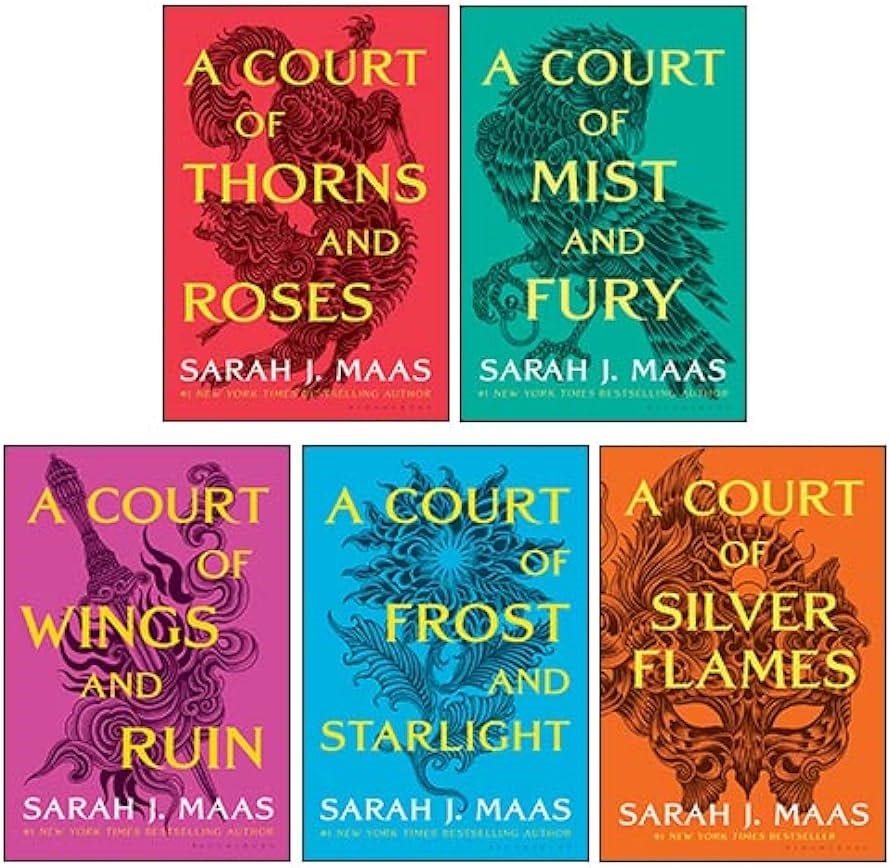
AND BEFORE YOU STONE ME, consider that there are far more reasons for you to cancel me than for mine critiquing, with history and theory on my side, your favourite book series. Consider first that I am an anarchist, I hate the military and the police, I support leftist protests in their utmost violent, the other day I literally made a call for you to
killyour sheriff and poison your landlord [facetiousness up to interpretation], and you can find me frequenting divisive comment sections on Instagram just to start fights. Not to mention I’m a cvnt with an absolutely atrocious attitude!If you’re going to cancel me for any reason, a bookish opinion is not that—five whole governments consider me a terrorist solely because I yap too much and no other reason! Me not liking your fav book is the absolute least of my concerns when I have so many cancellable traits.
But-but-but… I do digress.
Apropos of ACoTaR, I would like to speak on that which almost all detractors of this series have touched upon. However, I’ll be doing so with literature and theory underpinning my critique, as well as through the lens of Orientalism.
What is that topic, you might ask?
The Illyrians
First, let’s begin by talking about the real Illyrians.
Oh yes, there are real Illyrians.
Inhabiting the western Balkan Peninsula in southeastern Europe, the Illyrian people were a Paleo-Balkan population cited in historical texts between 6th century BCE and 7th century CE. Importantly, “Illyrian” became a pars pro toto at the behest of the Greeks, suggesting it likely referenced a diverse group of tenuously interconnected people who may or may not have self-identified as “Illyrian”.
John Wilkes in his book on the Illyrians notes specifically that these people were described in 2nd century Greek and Roman accounts as “barbaric” and “savage”9… Interesting terminology, I could’ve sworn it rang a bell. Maybe it’ll come to me as we proceed.
Illyria, the chief nomen applied to the land inhabited by various Illyrian tribes, constitutes what is modern day Albania, Kosovo, Montenegro, Bosnia-Herzegovina, Croatia, western and central Serbia, and parts of Slovenia. Owing to a history of Ottoman colonisation of the Balkan region, a significant portion of southeast Europeans, particularly the Albanians, are Muslim…
I smell blood in the water, how ‘bout you?
Why don’t we turn to Sarah’s “Illyrians”, now?
“Illyrians” in SJM’s A Court of Thorns and Roses, ACoTaR, series are a warrior people continuously described in-narrative as warmongering and violent with a penchant towards torture as punishment for disobedience. They are darker-skinned, tattooed, winged, staunchly patriarchal ethnic supremacists who cripple their women by clipping their wings so they cannot fly away and can instead be kept for breeding in the mountaintop war camps they exclusively live in.
And it actually does get worse.
Remember how I said [literally just now] that SJM’s Illyrians are “continuously described in-narrative as warmongering and violent”? That is asserted even by the Illyrian major supporting cast across the series, as well as the half-Illyrian main love interest.
Now hold on, at this point, you might be saying,
“Sfar, you’re talking about fiction. Fantasy and romance. It’s not that big of a deal; it’s not so pertinent or impactful. What harm does this really cause, in practice?”
In practice?


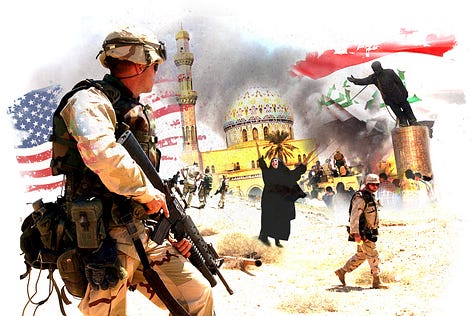
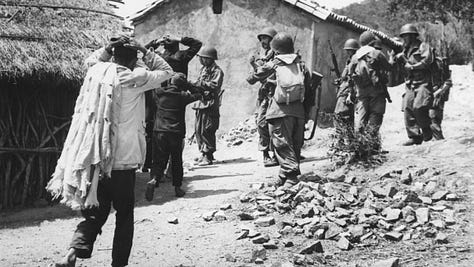

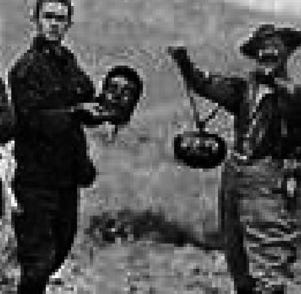
Anyway, so, the characters Cassian and Azriel are fully Illyrian—the SJM one—and constantly speak of their shame. How they “love the culture, BUT”, which reads on the page more as: “I love the culture of misogyny and war, but I’m so ashamed of misogyny and war.” It reads so because SJM gives absolutely no dimension or nuance to her Illyrians. She demonstrates no Illyrian culture beyond militarism, violent masculinity practiced by visually brown men, and what is very obviously a poorly-commentated-upon allegory for female genital mutilation.
Disregarding, essentializing, denuding the humanity of [a] people.
(“Humanity” loosely given SJM’s Illyrians aren’t humans to begin with, but that’s also not what “humanity” really means)
In the process, the characters of Cassian and Azriel become “one of the good ones”, the Token Minority—arguably the most insidious trope in entertainment media.
Meanwhile, ACoTaR’s half-Illyrian love interest character, Rhysand, exemplifies not only the same “one of the good ones” complex, but also takes on the role of the “white saviour”, as well as a sort of “white knight”, through his quote-unquote commitment to creating a safe haven for battered women or “civilising” the Illyrian barbarians. All that whilst he commits one of the most egregious acts of spousal abuse against the main character by withholding from her the circumstances of a pregnancy which could very likely kill her, and essentially Orientalises a vaguely-POC people he belongs to, but ACoTaR is white feminism ‘til the day it dies so what are ya gonna do?
Furthermore, hate and sexual attraction absolutely coexist. White Anglo men marry Black and Southeast Asian and Latina women despite their own racism against them—and it does not make them any less racist, Purple Hearts. Israeli soldiers rape Palestinians despite considering them inferior and dirty, just as Ottoman Turkish soldiers raped Armenians. Cis transphobes jerk off to trans porn despite being disgusted by trans people and, by proxy, with themselves.
Fetishisation is not diametrically opposed or outside of violence and bigotry, nor is sexual desire. In fact, fetishisation is violence and is bigotry because it is not mere sexual desire. It is another form of the very objectification and dehumanisation that are already a given under colonialism and racism. White women in the US citing Black men’s “✨raw, animalistic energy✨” for their “preference” are a dime a dozen; the reduction of non-white men to mindless, hypermasculine, hypersexual beasts is historical under racialised cisheteropatriarchy.11 Black, brown, and otherwise structurally non-white men are relegated to a mysterious and dangerous Other, then these non-white men are occupied by an oppressor, they resort to violence against their oppressor and yes, unfortunately, their own because oppression is brutalising not on accident, they are subsequently labelled by the oppressor as “violent and savage brutes” through which the oppressor justifies further oppression because “how else are you going to keep these brutes in check?”, and ‘round-and-around we go. For white women, despite their own oppression under cisheteropatriarchy, desire for non-white men is The Transgression. They are taught to hate and fear the, say, brown man: he is a taboo; his humanity is stripped; he is a stereotype in the Western gaze. To, for example, an Anglo-American white woman though, he becomes a dangerous erotic thrill. That is why, in older fiction, you see so many upper-class white men of the English or USAmerican stripe call their white daughters “sullied” should they be discovered gallivanting about with a freedman or a “g-word”. This is why white women are granted humanity, femininity, even if demure and pale and covered in delicate rose petals which they CANNOT UNDER ANY CIRCUMSTANCES deviate from, whilst non-white and foreign and queer women are “mannish”, to the point that minstrel shows and caricatures in America depicted Black women as literal animals. A subjugated class turned into the very things it is disparaged for by the very people who turned it in the first place. A mirror of SWANA, not only in that delineated cycle of violence, but the sexualisation of practices like bellydance which is beginning, in a sort of reactive fashion, to be seen as shameful and sexual in SWANA countries too. All because of the Western gaze.
The same fetishism-to-violence pipeline, with a few tweaks, goes in the opposite direction of the gender binary—unfortunately, we must speak in binaries for the structure we’re discussing does not permit boundary transgression, evidently.
Black, brown, and otherwise structurally non-white women are relegated to a seductive and alluring yet purportedly already-subjugated (whether that’s true or not doesn’t matter) Other, then these non-white women are occupied by an oppressor, their men resort to violence against the oppressor and yes, unfortunately, their own women because oppression is brutalising not on accident, the women are subsequently labelled by the oppressor as “subjugated by their men”, as “meek and docile and subservient”, through which the oppressor justifies further oppression because “how else are WE going to liberate these poor women from their brutes?”, and ‘round-and-around we go. For white men, in their crusade towards even more power and their crushing obligation to uphold the cisheteropatriarchy of their own creation, desire for non-white women is The Transgression. They are taught to see as inferior and to hollowly “pity” the, say, brown woman: she is an object just as much as everything else a coloniser steals from the land they occupy; her humanity is stripped; she is a stereotype in the Western gaze. To, for example, an Anglo-American white man though, she becomes an exotic sexual fetish he can transpose any fantasy he wishes onto because she’s not a human with agency to him. That is why, in all historical accounts of oppressor-oppressed dynamics, the colonised, kidnapped, subjugated women are always raped. It is an act of conquest.
I had wanted to include in this analysis another white [romanta]fantasy author who is guilty of anti-SWANASA Orientalism in their books, but unfortunately, they themselves, as well as their friends and fans, are known for violently harassing people who criticise their books; as a politically-outspoken mixed-SWANA author myself, that presents a little bit of an issue, as you could imagine. However, I will try to describe the specific dynamic of the contention:
A brown, quite obviously Indian-coded, girl is sold into sex slavery in place of her white friend. It is then discovered that this brown girl is actually… a sex demon… who uses her erotic wiles to manipulate men… whilst also being… queer…
I don’t think any further commentary on my part is necessitated.
Regardless of what angle you observe any of this from, “[A] white middle-class Westerner believes it [their] human prerogative not only to manage the nonwhite world but also to own it,” as Edward Saʿīd said, all “…because, by definition, ‘it’ is not quite as human as ‘we’ are”.
It, and We.
Us, and Them.
We: true human beings.
It: practically an animal.
Us: the children of light.
Them: the children of darkness.
And let’s talk about the wings on SJM’s Illyrians; this people’s subsequent status as only semi-human. Animal and insect pejoratives are a mainstay of supremacist rhetoric. “Rats”, “vermin”, “maggots”, “dogs”, “cattle”…
We’re seen. This movie. Before!
Coupled with her, and innumerable other authors’, characterisation of a “barbaric” brown population as “militaristic” and “warmongering” dwellers of the rugged natural environment—be that mountains or deserts, you could’ve fooled me that I was watching an early 2000s American TV broadcast or a correspondence of the Chechen War!
Do you now see why that lengthy preface for Orientalism was needed? You can actually understand what I’m saying now.
Extra context?
Sarah J. Maas is one of the most well-known and well-documented Zionists in the publishing industry. And let me make it beyond clear: Zionism has nothing to do with Judaism or Jewishness—there are more white Evangelical Christian Zionists in the USA than there are Jews in the world—and Sarah being Jewish plays no part in this critique of her. It is her Zionism, because Zionism functions in part upon the villainisation and dehumanisation of Arabs and Muslims in order to justify the preservation of the settler state.
AND AGAIN, I want to emphasise and empathise that Islamic colonisation of the Balkans and other regions like North Africa and Mesopotamia and Anatolia was violent and brutal and resulted in the destruction of millennia of history and culture, including that of SWANAn Jewish culture. That is an indisputable fact which deserves to be spoken of. Oppression under religious fundamentalism of any sort, especially theocratic, deserves to be spoken of.
At the same time, the demonisation, dehumanisation, and Islamophobic violence against Muslims in SWANA by occupiers, as well as SWANAn (and non-SWANAn) Muslims abroad, is all rooted in centuries upon centuries of Anglo-Franco-Germano-USian colonialism and subjugation which engendered some of the most horrific acts of violence and collective punishment, and is being used currently as disgusting justification for the Palestinian genocide in Gaza, as well as the West Bank and other occupied Palestinian territories. Aryéh Yitshák King is the Deputy Mayor of Jerusalem, and this is what he has to fvcking spew:
And it is indeed that latter point of anti-SWANA colonial legacy, though not pertaining exclusively to Muslims, that I am discussing here today. I am not wilfully or ignorantly brushing past the reality of Islamically-justified persecutions of oppressed groups across SWANA, or the inherent privilege Sunnis specifically have in Muslim-majority SWANA outside of the settler colony of Israel and the couple Shī‘a-majority states, nor am I excusing any of it. I simply have a thesis here and the fulcrum of it is not internal politics, but the Western gaze. As I disclaimed at the beginning: this essay is not a Global analysis. It is strictly West-against-East Orientalism in fictional, modern, Anglophonic literature under scrutiny here.
Due to the obscene popularity of Sarah J. Maas, and especially her ACoTaR series, a colonialist representation of a SWANA-coded people becomes something ingested and integrated, even if it is not consciously recognised. The Western audience has for so many decades been subjected to anti-SWANA messaging by media that it does not need to actively acknowledge these racist depictions; its mind is already primed for it, all it needs to do is consume and aaall the translation will transpire on its own. Just like millennia-old Antisemitic conspiracy theories. As acknowledged by Edward Saʿīd himself: “…Orientalism and modern Antisemitism have common roots.”
The beast is in there already. It just needs to be fed.
Subsequently, non-SWANA authors attempting to, for example, somehow “subvert” the sexualisation of women through replacing their position with men instead, such as in their [still-colonial and culturally violent] depictions of bellydancing, not only miss the point that they remain equating SWANA cultural practices to colonialist sexualisation, but operate on the liberal idea that somehow reversal is justice. As opposed to abolition, which is what would actually beget justice in this context.
To ease the tension a little bit, did you know that SJM allegedly attempted to trademark the term “Illyrian”, which would make it so that no merchandise could be produced with that word without financial compensation to her? “Illyrian”… Ya know, the very real peoples from a land interestingly now populated by the highest percentages of Muslims in Europe, like Bosnia-Herzegovina with an over 50% Muslim population, Albania at 60%, Kosovo with over 90%… With a backdrop of this author’s blatant anti-SWANA racism, at that! White and white-aligned Western people stealing POC and non-Western ethnic designators for their own use or just because they want to. That would never happen in the real world, right?

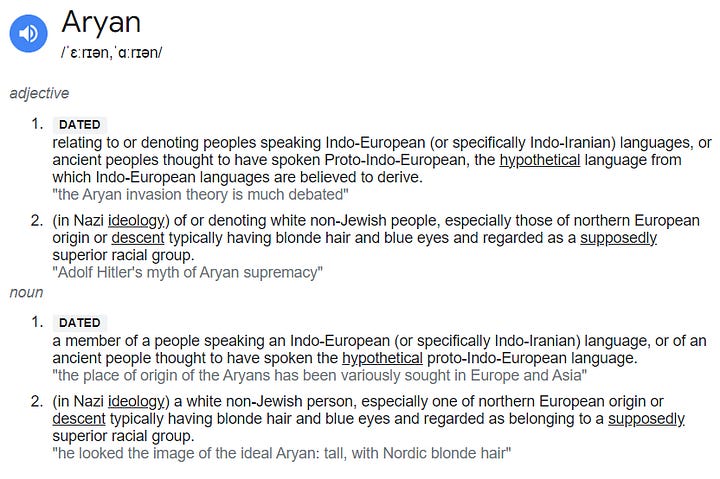
Denial of SWANA Diversity; Erasure Through Appropriated Storytelling
Special thanks to Shanspeare for leading me to resources.
African-American Marxist and feminist political activist Angela Davis was famously quoted saying,
“I have a hard time accepting diversity as a synonym for justice. Diversity … is a strategy designed to ensure that the institution functions in the same way it functioned before, except now you have some Black faces and brown faces. It’s a difference that doesn’t make a difference.”
[UPDATE 1/4/2025: I’m starting to feel worse and worse about having quoted Angela Davis here, considering how Orientalist she herself is and how much she has contributed to the normalisation of Eastern fascism (historically cosying up with the Âyatollâh is especially egregious, but so is going easy on the RF).
In short, there are very few thinkers more disappointing than Angela Y. Davis.]
The inclusion of SWANA codings in modern fictional literature of the Anglophonic strain by non-SWANAns is more often than not Plastic Representation, as coined by Associate Professor of Performing and Media Arts Kristen J. Warner in their chapter “A Black Cast Doesn’t Make A Black Show” of the book Watching While Black.12 As in, representation which is shaped to look like meaningful iconography, but that is in fact artificial. Warner applies this concept specifically to “Blackwashing”, the act of race-swapping an originally non-Black character into one who is Black. They argue that this act, while holding merit, behaves to merely suggest progress whilst failing to tackle the systemic issue.
And indeed.
An author thinks they can throw together rawāshin and ’īwānāt, let loose some camels, name a character Ravi ibn al-Yıldız, toss in a srjep, give it a desert setting, and have ✨diversity✨ as if homogenisation and erasure of distinction is not the shtick of Orientalist orthopraxy. The conflation of traditions from Persia, Arabia, and the Indian Subcontinent, an ahistorical amalgamation of Chinese, Japanese, and Korean cultures, shoehorning of all Slavic people under “Russian”, is each the head of the same beast, and yet it’s all committed by Anglophonic Western authors of modern-day fictional literature.
A wonderful Saudi friend of mine once observed something I’ll quote evermore, that being the phenomenon of particularly USAmericans viewing the rest of the world as some nebulous, amorphous land of NPCs they can headcanon however they please. No agency, no definition, no nuance, “no meaning, no depth” (Grant, 2015).
This is conquest mentality. If you can reduce an entity to an essential component, you can control it, and that it precisely what the oppressor wants, regardless of who or what they are.
Just as genetic diversity is key to survival of a species, so too cultural diversity is key to sustaining a free and healthy humanity, and the stereotype in the West (and quite frankly not just the West) of all “Middle Eastern” people being Muslim Arabs is just as real as all of the aforementioned. This erroneous conception only furthers oppression of the SWANA region. I have had even other non-Arab SWANAn people tell me that they have never heard of the West Asian ethnic groups I belong to. In part, it’s due to us having been subjected to genocide and there simply not being that many of us remaining, but it’s also a vestige of external erasure in which Western entertainment media, including “silly” romantasy books, are complicit.
Not only that, but these authors don’t want to try. They ignore our power, they ignore our struggle, they ignore our liberatory spirit, our diversity, our unwavering commitment to freedom and sovereignty, and instead choose to fixate on that which frightens yet allures them, which is the crux and essence of Orientalist mentality. They are comfortable in the ignorance they internalise from the white supremacist system and thus espouse, and no matter how many of us correct them, no matter what hollow platitude and fake “apology” they extend to us, they don’t want to actually do the work of dismantling their bigotry, especially if they are the most privileged of Western society: cishet and white. However, being queer and non-SWANA POC does not hand an author a get-out-of-jail-free card to participate in this bigoted, erasive practice. This was exemplified by the situation with Zabé Ellor, queer author of Silk Fire which has been utterly blasted for its anti-Chinese Orientalism. One Goodreads reviewer very eloquently speaks of this book:
“As a trans Asian person, I’m confident in saying this: queer writers shouldn’t be exempt from facing the consequences of their racism. One marginalization doesn’t exempt you from marginalizing another community. Throughout the book, Asian culture is used as an aesthetic, from the book’s motif to the names to the food. It’s very prevalent and it just upsets me … It … upsets me that this author claims to be a BIPOC ally yet uses East Asian (specifically Chinese) culture as an aesthetic without giving much thought to portraying it with any nuance. That’s another main issue I have with this book: be it the Chinese-inspired aesthetic or the matriarchy, no aspect of this book is portrayed with any hint of nuance. Please acknowledge that Orientalism is a type of fetishism that reduces an entire culture and its people to an aesthetic. It’s a form of racism, plain and simple, and I really dislike the way that Asian aesthetics were used to give this book more of a ‘sensual’ air.”
Exactly what I said.
Sā’ed Aṭshān writes in Queer Palestine and the Empire of Critique:13
“One’s geographic location—whether Gaza City, Tel Aviv, or Jenin, for example—also plays a fundamental role in one’s experience of queerness. Palestinians are cisgender and transgender, feminist and misogynist, religious and secular, Christian and Muslim, rich and poor, able-bodied and disabled, rural and urban, traditional and cosmopolitan, homebound and itinerant, politically left and right, without regular access to a computer and online throughout the day, from stable families and broken families, and everything in between all these seemingly dichotomous spheres.”
While this writing is specifically about queer Palestinians, as the author himself is, this quotation can be walked back to SWANA as a whole, to its diverse populations from Sakartvelo to Cyprus to Irāq to Kuwait to Omān to Lībiyā.
Unfortunately, it doesn’t get walked back, at least not by the people who should.
Going off of this, another thing this Saudi friend of mine said, in a rather jaded manner, is that, unfortunately, the West’s Egyptomania is the only thing preventing SWANA’s sole representation in Western media from being the Arab Muslim stereotype. I fear that’s true. Yet both stem from Orientalism and both are rooted in colonial thinking. When it’s not horrendously stereotyped Muslim Arabs, it’s ahistorical Ancient Egyptians, and I guess we just volley between those two until the heat death of the universe.
But, beyond all the aforediscussed, aaall the cultural, historical, colonial, socio- and geopolitical factors, why do authors continue to do this? Why do they insist on writing stories with Orientalist settings, characterisation, romanticisation, glamourisation? With racist, xenophobic, Islamophobic, Antisemitic, Romaphobic, Slavophobic, culturally insensitive, supremacist caricatures?
In the words of a modern philosopher:
Clout, and cash.
~Sfar~Ⓐ🧿֎⨳
SWANA Alliance. (n.d.). What is SWANA? https://swanaalliance.com/about
Saʿīd, E. W. (1978). Orientalism. Pantheon Books.
Abdel-Malek, A. (1963). Orientalism in Crisis. Diogenes, 11(44), 103–140. https://doi.org/10.1177/039219216301104407
Grant, S. (2015, December 31). Black writers courageously staring down the white gaze – this is why we all must read them | Stan Grant. The Guardian; The Guardian. https://www.theguardian.com/commentisfree/2015/dec/31/black-writers-courageously-staring-down-the-white-gaze-this-is-why-we-all-must-read-them
Moallem, M. (2004). Violence of Protection. Interventions, 47–51. https://doi.org/10.1057/9781403981561_7
Fassin, D. (2017). The Endurance of Critique. Anthropological Theory, 17(1), 4–29. https://doi.org/10.1177/1463499616688157
Wilkes, J. (1996). The Illyrians. Wiley-Blackwell.
Conrad, C. (2023, December 7). Drop the T - The Deadly Consequences of Gay Respectability Politics. YouTube.
“By positioning yourself as ‘one of the good ones’, you are always pointing the finger of blame away from you somewhere else. Because if you are good by comparison, then by comparison someone is bad.”
Author’s edit 2/3/2025:
I don’t really stand by the liberal use of the term “patriarchy” anymore, as it is lousy class analysis. At the same time, though, I’m not entirely for the abolition of that term, as I do see its uses within revolutionary socialist class analysis (it’s way too much to discuss here so I won’t also I don’t want to).
Smith-Shomade, B. E. (2013). Watching While Black. Rutgers University Press.
Aṭshān, S. (2020). Queer Palestine and the Empire of Critique. Stanford University Press.




